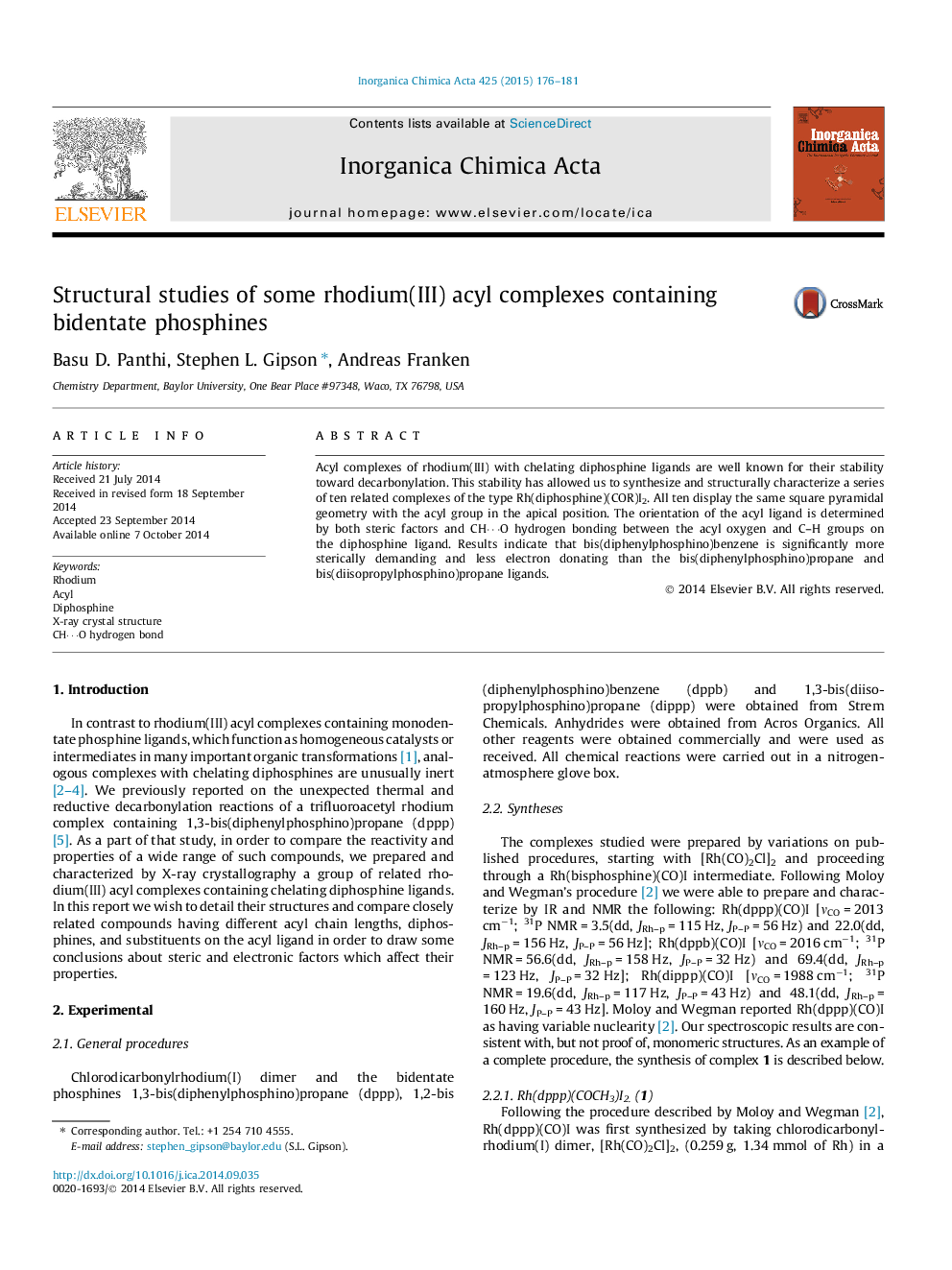| Article ID | Journal | Published Year | Pages | File Type |
|---|---|---|---|---|
| 1309280 | Inorganica Chimica Acta | 2015 | 6 Pages |
•Rh(diphosphine)(COR)I2 complexes display square pyramidal geometry.•The acyl group in the apical position always aligns the oxygen centered over the phosphorus atoms.•Orientation of the acyl group is proposed to result from CH⋯O hydrogen bonding.•dppb is more bulky and a poorer electron donor than dppp or dippp.
Acyl complexes of rhodium(III) with chelating diphosphine ligands are well known for their stability toward decarbonylation. This stability has allowed us to synthesize and structurally characterize a series of ten related complexes of the type Rh(diphosphine)(COR)I2. All ten display the same square pyramidal geometry with the acyl group in the apical position. The orientation of the acyl ligand is determined by both steric factors and CH⋯O hydrogen bonding between the acyl oxygen and C–H groups on the diphosphine ligand. Results indicate that bis(diphenylphosphino)benzene is significantly more sterically demanding and less electron donating than the bis(diphenylphosphino)propane and bis(diisopropylphosphino)propane ligands.
Graphical abstractTen rhodium(III) acyl complexes of the type Rh(diphosphine)(COR)I2 have been synthesized and characterized by X-ray crystallography. All display square pyramidal geometry with orientation of the apical acyl group determined by CH⋯O hydrogen bonding of the acyl with the diphosphine.Figure optionsDownload full-size imageDownload as PowerPoint slide
